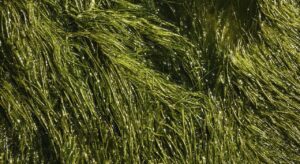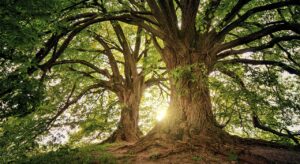At this point, scientists know of the existence of 30,000 species of algae. They are not full-fledged plants – rather, they are lower plants. Scientifically speaking, they are unicellular or multicellular organisms, most of which can only be seen under a microscope. Some algae are edible and many peoples make different dishes from them. But there are also poisonous algae that have been causing a lot of problems to humans and animals for a couple of years in a row. In different parts of our planet there have been dozens of cases of algae poisoning, some of which proved fatal. Not to mention that more than a hundred elephants have recently died in Africa. But why are there more and more toxic algae and how not to run into them? Let’s get to the bottom of it.
What kind of algae are there?
Scientists believe that algae are among the earliest members of the plant kingdom. Numerous studies have proven that they appeared about 2.5 billion years ago, long before the first dinosaurs. They are still alive and actively reproducing because they know how to adapt to any conditions. Among thousands of species of algae there are those that can safely live in any water: fresh, salty, dirty, clean – makes no difference. Depending on the species, algae attach themselves to underwater surfaces or float freely in the water. They can be colored green, red, blue, purple and other colors. The hue may change depending on the surrounding conditions.
Externally, algae may look like fluffy balls, carpets spread across the water surface or like slime. Their structure may be flat, branched, filamentous or composed of several layers. Most of the algae can only be seen with a microscope, but in nature there are species that reach several meters in length. The largest algae probably grows on the U.S. coast on the Pacific side. Macrocystis pear-shaped (Macrocystis pyrifera) grows there and is up to 200 meters long. And the smallest algae was found in Japan – it consists of only four meters, so its width is 10 micrometers. Such data, at least in 2013, was shared by the news agency TASS.
Edible algae
Most edible algae grow in the sea, they need salt water. Algae growing in fresh water, on the other hand, are mostly poisonous. Edible algae are grown on many coasts of our planet, especially well developed in Japan. In the course of numerous studies it has been proved that the digestive system of the Japanese is adapted to digest algae more than that of other peoples. Algae are also actively consumed by the people of China and Korea. In the western hemisphere, Norway, France, and England are considered the largest producers of algae products. Restaurants in the United States often serve “crunchy seaweed,” but it is usually common cabbage.
The benefits of seaweed are due to its high dietary fiber and iodine content. Iodine is considered one of the most important trace elements within our bodies. It is important for the thyroid gland, which is responsible for metabolism, functioning and development of the brain and other organs of the human body. Many seaweed tastes salty, but there is not much sodium chloride in it. Some people add seaweed to their diet to replace regular salt. But it is important to note that the benefits of algae depend directly on the water in which they grew. If the conditions were dirty, the algae can harbor heavy metals that are very harmful to the human body.
Poisonous Algae
Poisonous algae are better known scientifically as cyanobacteria or blue-green algae. At their core, they are microscopic creatures that can absorb sunlight and convert it into energy. Cyanobacteria get their name because they combine characteristics of both bacteria and plants. When the air temperature gets high, blue-green algae begin to “bloom”. Initially, the algae are colored green, a clear sign of their ability to convert sunlight into energy. As the algae “blooms”, it turns other colors. Because of this, entire lakes can change their appearance – just like the Lonar meteorite lake I mentioned above.
Blue-green algae are everywhere on our planet. They do best in calm, nutrient-rich waters. Their vitality is amazing – if they lack moisture, they begin to secrete mucus, which holds water and protects them from radiation. Many species of cyanobacteria secrete substances that are dangerous to human and animal life. When any living organism drinks water “captured” by cyanobacteria or bathes in it, poisonous substances immediately make themselves heard.


